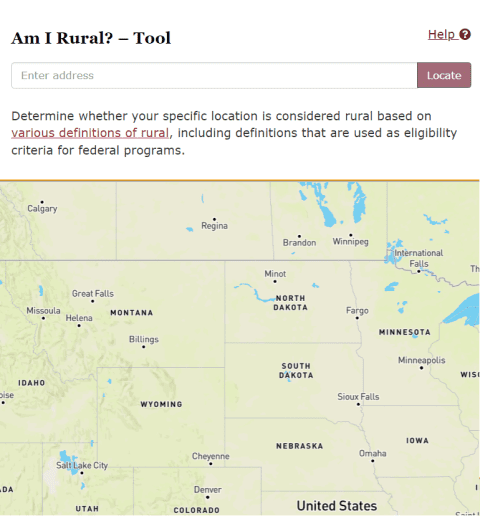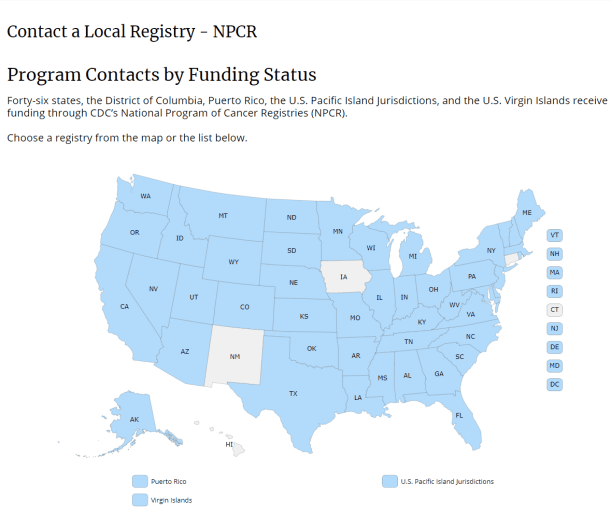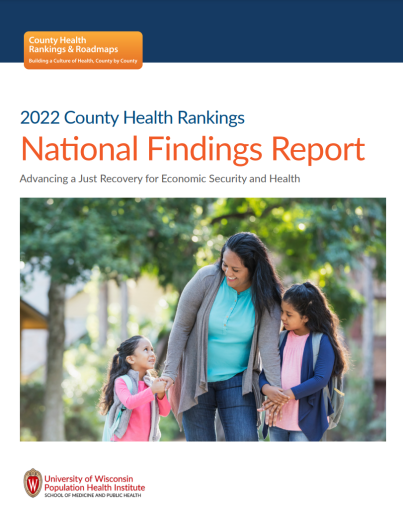The Geographic Health Equity Alliance and the University of Iowa’s Advancing Cancer and Rural Equity Lab hosted “Defining and Describing Rural Communities in Comprehensive Cancer Control Planning” on June 7, 2022. This webinar is the first webinar in the 4-part series, “Rural Inclusion in Comprehensive Cancer Control Planning”, designed to help Comprehensive Cancer Control Programs, coalitions, and partners meaningfully include rural in their planning processes. This first webinar focused on how rural is commonly defined, what data sources are available to describe the rural cancer burden and cancer risk factors to incorporate into comprehensive cancer control plans.
Webinar objectives:
- To understand the need for inclusion of rural data in comprehensive cancer control planning.
- To define rural using different federal definitions.
- To identify rural-relevant data on cancer burden and risk factors as well as population and social determinants of health data.
- To integrate rural-relevant data into comprehensive cancer control plans.
Additional Resources
Presenter

Whitney Zahnd, Ph.D.
Assistant Professor
Department of Health Management and Policy
University of Iowa
Data Resources for the Inclusion of Rural in Comprehensive Cancer Control Planning
There has been an increasing call to include rural data, partners, goals, objectives and strategies in comprehensive cancer control planning. On June 7th, the Advancing Cancer and Rural Equity (ACRE) Lab, in collaboration with the Geographic Health Equity Alliance, hosted a webinar focused on the inclusion of rural data in comprehensive cancer control planning processes. This article introduces new resources that have become available since June’s webinar and will provide information and direct links to some of the data sources described in the recent webinar. These sources are not exhaustive but provide a relatively comprehensive overview of relevant data sources for comprehensive cancer control programs and coalitions to use in their planning and evaluation processes.
Rural Cancer Prevention and Control
In July, the Rural Health Information Hub released a “Cancer Prevention and Treatment in Rural Areas” topic guide. This topic guide provides information about a myriad of rural cancer topics, including statistics about rural cancer across the cancer control continuum, differences in cancer burden at the intersection of race/ethnicity and region, and information on how policymakers and federal agencies are and can address rural cancer control.
To incorporate rural data in comprehensive cancer control plans, definitions of rural must be considered. In brief, there are several important factors to consider in choosing a rural definition and categorization:
- What geographic level (e.g., county, ZIP code) is most relevant for either targeted efforts or aggregating across your state
- What data is available and linkable at your geographic level of interest or have rural-urban measures incorporated
- What definition (e.g., considering population size/urbanization or commuting patterns?) and categorization (e.g., binary or more categories) are most meaningful
- What definition may be most relevant for funding opportunities or clinic classifications for your rural community

Rural Classification
The Rural Health Information Hub has a “What is Rural” Guide that describes the commonly used definitions of “rural” as well as an “Am I Rural?” tool that allows users to enter a specific address or location and indicate its urbanicity/rurality across different definitions, its eligibility for federal funding from the Federal Office of Rural Health Policy and its designations related to health provider shortages and medical underserved status. Links to specific, common measures of rural are noted below.
- United States Department of Agriculture rural definitions:
- Rural-Urban Continuum Codes (county-level)
- Urban Influence Codes (county-level)
- Rural-Urban Commuting Area codes (census tract or ZIP code approximation)
- Frontier and Remote Area codes (ZIP code)
- The Centers for Disease Control and Prevention’s Urban-Rural Classification Scheme for Counties (county-level)
- Federal Office of Rural Health Policy Funding Criteria
State-specific
Some states may have also developed state-specific rural definitions. Please consider checking with your State Office of Rural Health if you are interested in these potentially available definitions. 
Several publicly available sources of data can provide rural-urban differences in cancer burden, screening, or cancer-relevant health behaviors (e.g., smoking, diet, HPV vaccination) or have area-level measures (e.g., county) that can provide meaningful information for geographic targeting of initiatives.
- State cancer registries are funded through the CDC’s National Program of Cancer Registries (NPCR) or the NCI’s Surveillance Epidemiology and/or End Results (SEER) program and provide information on cancer incidence, staging, treatment, and survival. Each respective registry may have different guidelines for data acquisition and presentation at different geographic levels. For more information and to contact your state’s registry, see the links below:
- The Behavioral Risk Factor Surveillance System (BRFSS) is an annual survey funded by the CDC but conducted by each respective state. Cancer-relevant data may include health behaviors (e.g., smoking, diet, exercise) and cancer screening. The national, publicly available dataset has included two variables to enable analysts to consider rural estimates or rural-urban comparisons. Other data or types of analyses may be accessible through state BRFSS coordinators. For more information and to contact your state’s coordinators, see the links below:
- CDC WONDER provides access to mortality data by cause of death and includes rural-urban designations to examine rates and trends by rurality and county, though data is suppressed if counts are too small.
- State Cancer Profiles from the NCI provide state-level and sometimes county-level information on cancer-related behaviors, incidence, mortality, and prevalence for each state.
- CDC PLACES data provide area-level (including county, ZIP code tabulation area, and census tract) model-based estimates for prevalence of cancer history, cancer screening, and cancer-relevant health behaviors (e.g., smoking, drinking, exercise, etc.) based upon BRFSS data. An interactive map and a data portal are available.
- TeenVax View provides data and interactive maps on vaccination, including HPV, for adolescents. State-level estimates of coverage as well as estimates by metropolitan statistical area (MSA) group, including living in a non-MSA (i.e., rural), within each state.
Social Determinants of Health, Demographics, and Health Workforce
Additional important data sources for describing the social determinants of health, demographics, and health workforce are also available. 
- The Rural Health Information Hub has State Guides that provide important information on the social determinants of health and rural healthcare facilities within a state, and a Rural Data Explorer which provides county-level data stratified by rural and urban on demographics, social determinants of health, health workforce, etc.
- The County Health Rankings consider many factors to rank counties within a state based on policies and programs, health factors, and health outcomes. considers many factors to rank counties within a state based upon policies and programs, health factors, and health outcomes, including many cancer-relevant variables such as health behaviors, social factors, and air pollution.
- The American Community Survey is a continuous survey performed by the U.S. Census Bureau that collects data on demographics, socioeconomic factors, housing, etc. Data is available as 5-year estimates at the census tract, ZIP code, and county levels. Such data can be obtained from the U.S. Census Bureau website, the National Historical Geographic Information System website, and other locations.
- The Area Health Resources File from the Health Resources and Services Administration provides county-level data on health care professions, health facilities, population characteristics, economics, health professions training, environment, and more.

